What's in a Name?
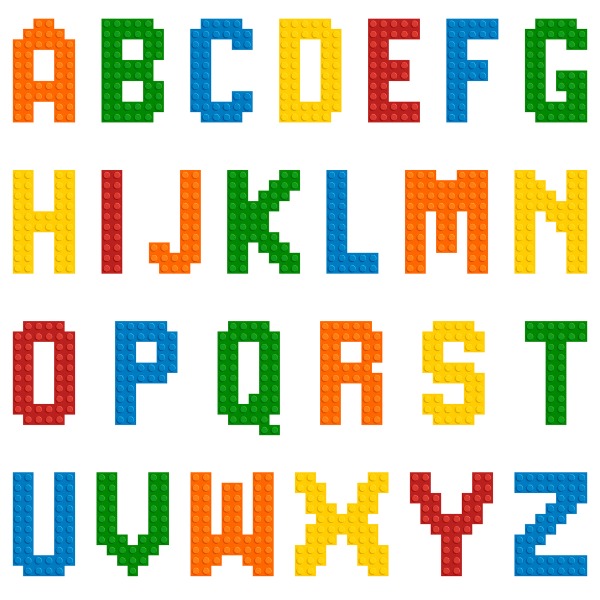
Toy alphabet (zak00, iStockphoto)
Students develop and apply algebraic reasoning, spatial sense/reasoning and communicating skills as they explore the math, science and technology in their name.
Overview
Students sequence and graph their names to explore names and words from a mathematical perspective.
Timing
30-40 minutes
Setting the Stage
Names are an important part of our identity. They are part of what makes each of us unique. Students often have opportunities to find out the meaning of their names, why they were given their names, and to discuss how they feel about their names. This inquiry will provide students with opportunities to explore their names through a different lens using the skills of mathematics and science and technology.
This inquiry could begin from:
- questions and/or comments arising as the students explore and learn about the letters in their names. Discuss using questions such as:
- “What do you notice about the letters in your name?”
- “Who else has a name that starts with the same letter as yours?”
- “What else can you tell me about the letters in your name?”
- “What shapes do you see in your name?”
- a collection of baby names books and online resources. Discuss using questions such as:
- “What can you find out about your name from these books?”
- “What are some things the books cannot tell you about your name?”
- read and compare several books such as My Name is Yoon, The Name Jar, My Name is Sangoel, and My Name is Aviva. Discuss using questions such as:
- “What are some things that are the same about each of the stories?”
- “What are some things that are different?”
- “Why do you think the children in the stories feel as they do about their names?”
- “How do you feel about your name?”
Details
- multiple sets of numbered letter tiles (similar to Scrabble tiles)
- linking cubes, enough for each student to have 20-25 cubes (Note: it is important that the cubes link from all sides)
- graph paper
- Copy (on cardstock or cardboard) and cut apart numbered letter tiles. The number of tiles needed per letter depends on the names of the students in your class.
- Collect linking cubes. Make sets of 20-25 cubes ahead, or let students count them out themselves.
- Make copies of the graph paper, at least 1 per student
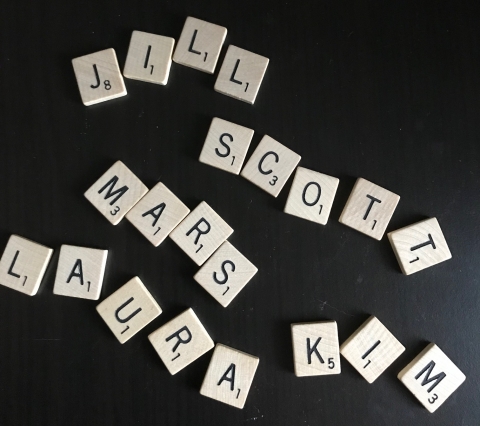
Students develop the skills of algebraic reasoning, communicating, and visualization as they learn about the mathematics and science and technology in their names.
Students:
- use the numbered letter tiles to create their first names.
- notice and name the mathematics in their names (e.g., numbers that appear more than once, total of the numbers in their names, comparing number of letters to total of the tiles, stories that can be made using the numbers in their names, patterns in the numbers).
- Educator observes and documents, including students’ observations, questions, and wonderings for use in the development of further learning through inquiry.
- Educator notices and names other mathematical ideas by asking questions such as, “Which letters in your name are made up of only straight lines? Which letters in your name have curved surfaces? Which ones have circles? Which letters are symmetrical?”
- use the graph paper as a guide to visualize how they would make the first initial with linking cubes (20-25).
- sketch out their initial on the graph paper as they visualized it.
- build their initial with linking cubes in such a way that it stands up by itself (is stable).
- Educator observes, documents, and facilitates as necessary, asking questions such as:
- “Why are some letters more stable than others? What did you have to do to make the unstable letters more stable? How did that change your vision of what your initial would look like?”

Observe and document, using anecdotal comments, photos and/or video recordings, students’ ability to demonstrate the following skills:
- Algebraic Reasoning - students notice and name the mathematics when creating their name using numbered letter tiles (e.g., “My name has four letters. Two Ls and two Is. There’s a pattern in the letters – L-i-l-i .”; “The letters in my name add up to 4. They always make 4 no matter what number story I make.” (e.g., 3+1=4; 1+1+1+1=4; 2+2=4)
- Spatial Sense/Reasoning – students create, retain, and retrieve a visualization of their name created with linking cubes, then sketch their visualization on graph paper
- Communicating – students use appropriate language when talking about the mathematics and science and technology in their names (e.g., “My initial wouldn’t stand up. I had to take it apart and make the bottom wider so it would be stable. So my initial looks smaller than my sketch on the grid paper. I would need more cubes to make it exactly the same as my sketch.”)
| Students: Saying, Doing, Representing |
Educator Interactions: Responding, Challenging |
| Students use the numbered letter tiles to create their first names, and notice and name the mathematics in their names. |
|
| Students visualize their first initial as it would appear using linking cubes (20-25) and use the graph paper to sketch out their visualization. |
|
| Students make their initials with linking cubes, constructing them so that they stand up on their own (stable). |
|
Literacy
- communicate ideas and information orally (e.g., share challenges of making their name stable; talk about how the patterns and numbers in their names are the same and/or different from others)
Mathematics
- represent mathematical ideas using concrete materials, pictures, diagrams, graphs, tables, numbers, words, and symbols (e.g., show understanding of commutative property by showing that no matter what order they add them in, the numbers in their name always add up to the same total)
If your students are interested in learning more, the following may provoke their curiosity:
- Provide opportunities for students to collect and display data about their names. For example, students could collect data that looks at:
- which letters are used the most, the least or not at all and graph the results;
- names that used the most tiles and the least tiles, and compare the number of tiles to total of the numbers on the tiles (e.g., a shorter name may use letters with higher values and thus have a larger total than a longer name with lower-valued letters)
- Provide opportunities for students to repeat the inquiry using their middle or last initials. Discuss using questions such as:
- “Do you predict you will need more cubes or fewer cubes to do your middle initial? Why do you think that?”
- “What did you learn from doing your first initial that will help you this time?” (e.g., “I need my sketch to show how I will make my initial stable”; “I will make my last initial smaller than I made my first initial because it will be easier to build.”)
- Visualization is an important skill for engineers to have. Discuss with students why this skill is important for engineers. Where might students use visualization? (e.g., when creating a sequence of moves in the gym; when planning materials that will be needed to create scenery for a puppet play)
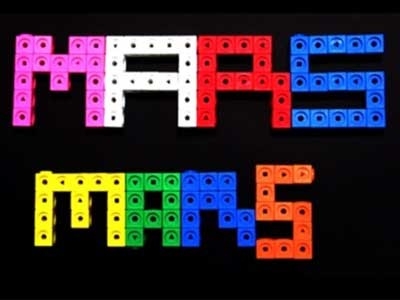
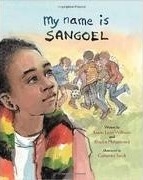
My Name is Sangoel
by Karen Williams and Khadra Mohammed
Sangoel is a refugee who endures the fact that no one can pronounce his name. He comes up with an ingenious solution and begins to feel at home.
ISBN: 9780802853073
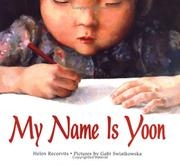
My name is Yoon
By Helen Recorvics
Disliking her name as written in English, Korean-born Yoon, or "shining wisdom," refers to herself as "cat," "bird," and "cupcake," as a way to feel more comfortable in her new school and new country.
ISBN: 9780545200127
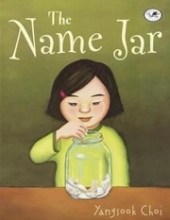
The Name Jar
By Yangsook Choi
The new kid in school needs a new name! Or does she? Being the new kid in school is hard enough, but what about when nobody can pronounce your name?
ISBN: 9780756916305
Rosie's Walk (Lessons)
Students develop and apply communicating, sequencing and spatial reasoning skills as they create and navigate a maze to get Rosie the Hen safely home for lunch.
Materials
- multiple sets of numbered letter tiles (similar to Scrabble tiles)
- linking cubes, enough for each student to have 20-25 cubes (Note: it is important that the cubes link from all sides)
- graph paper
Preparation
- Copy (on cardstock or cardboard) and cut apart numbered letter tiles. The number of tiles needed per letter depends on the names of the students in your class.
- Collect linking cubes. Make sets of 20-25 cubes ahead, or let students count them out themselves.
- Make copies of the graph paper, at least 1 per student

What to Do
Students develop the skills of algebraic reasoning, communicating, and visualization as they learn about the mathematics and science and technology in their names.
Students:
- use the numbered letter tiles to create their first names.
- notice and name the mathematics in their names (e.g., numbers that appear more than once, total of the numbers in their names, comparing number of letters to total of the tiles, stories that can be made using the numbers in their names, patterns in the numbers).
- Educator observes and documents, including students’ observations, questions, and wonderings for use in the development of further learning through inquiry.
- Educator notices and names other mathematical ideas by asking questions such as, “Which letters in your name are made up of only straight lines? Which letters in your name have curved surfaces? Which ones have circles? Which letters are symmetrical?”
- use the graph paper as a guide to visualize how they would make the first initial with linking cubes (20-25).
- sketch out their initial on the graph paper as they visualized it.
- build their initial with linking cubes in such a way that it stands up by itself (is stable).
- Educator observes, documents, and facilitates as necessary, asking questions such as:
- “Why are some letters more stable than others? What did you have to do to make the unstable letters more stable? How did that change your vision of what your initial would look like?”

Assessment
Observe and document, using anecdotal comments, photos and/or video recordings, students’ ability to demonstrate the following skills:
- Algebraic Reasoning - students notice and name the mathematics when creating their name using numbered letter tiles (e.g., “My name has four letters. Two Ls and two Is. There’s a pattern in the letters – L-i-l-i .”; “The letters in my name add up to 4. They always make 4 no matter what number story I make.” (e.g., 3+1=4; 1+1+1+1=4; 2+2=4)
- Spatial Sense/Reasoning – students create, retain, and retrieve a visualization of their name created with linking cubes, then sketch their visualization on graph paper
- Communicating – students use appropriate language when talking about the mathematics and science and technology in their names (e.g., “My initial wouldn’t stand up. I had to take it apart and make the bottom wider so it would be stable. So my initial looks smaller than my sketch on the grid paper. I would need more cubes to make it exactly the same as my sketch.”)
Co-constructed Learning
| Students: Saying, Doing, Representing |
Educator Interactions: Responding, Challenging |
| Students use the numbered letter tiles to create their first names, and notice and name the mathematics in their names. |
|
| Students visualize their first initial as it would appear using linking cubes (20-25) and use the graph paper to sketch out their visualization. |
|
| Students make their initials with linking cubes, constructing them so that they stand up on their own (stable). |
|
Cross-curricular Connections
Literacy
- communicate ideas and information orally (e.g., share challenges of making their name stable; talk about how the patterns and numbers in their names are the same and/or different from others)
Mathematics
- represent mathematical ideas using concrete materials, pictures, diagrams, graphs, tables, numbers, words, and symbols (e.g., show understanding of commutative property by showing that no matter what order they add them in, the numbers in their name always add up to the same total)
Extending the Learning
If your students are interested in learning more, the following may provoke their curiosity:
- Provide opportunities for students to collect and display data about their names. For example, students could collect data that looks at:
- which letters are used the most, the least or not at all and graph the results;
- names that used the most tiles and the least tiles, and compare the number of tiles to total of the numbers on the tiles (e.g., a shorter name may use letters with higher values and thus have a larger total than a longer name with lower-valued letters)
- Provide opportunities for students to repeat the inquiry using their middle or last initials. Discuss using questions such as:
- “Do you predict you will need more cubes or fewer cubes to do your middle initial? Why do you think that?”
- “What did you learn from doing your first initial that will help you this time?” (e.g., “I need my sketch to show how I will make my initial stable”; “I will make my last initial smaller than I made my first initial because it will be easier to build.”)
- Visualization is an important skill for engineers to have. Discuss with students why this skill is important for engineers. Where might students use visualization? (e.g., when creating a sequence of moves in the gym; when planning materials that will be needed to create scenery for a puppet play)

Supporting Media

My Name is Sangoel
by Karen Williams and Khadra Mohammed
Sangoel is a refugee who endures the fact that no one can pronounce his name. He comes up with an ingenious solution and begins to feel at home.
ISBN: 9780802853073

My name is Yoon
By Helen Recorvics
Disliking her name as written in English, Korean-born Yoon, or "shining wisdom," refers to herself as "cat," "bird," and "cupcake," as a way to feel more comfortable in her new school and new country.
ISBN: 9780545200127

The Name Jar
By Yangsook Choi
The new kid in school needs a new name! Or does she? Being the new kid in school is hard enough, but what about when nobody can pronounce your name?
ISBN: 9780756916305
Learn More
Rosie's Walk (Lessons)
Students develop and apply communicating, sequencing and spatial reasoning skills as they create and navigate a maze to get Rosie the Hen safely home for lunch.